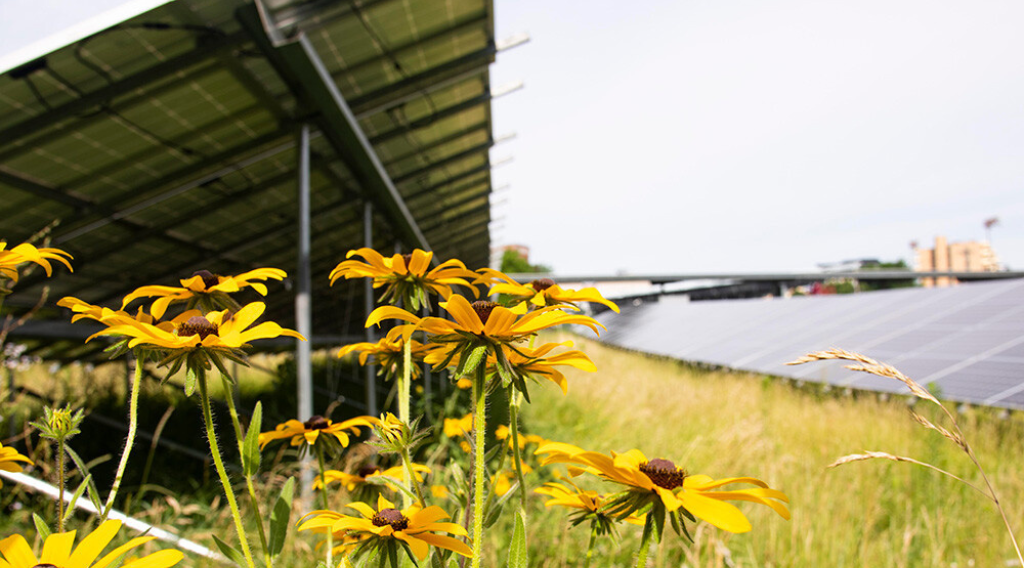
The last agenda item at the final city council meeting of the decade in Saint Paul, Minnesota was the adoption of the Saint Paul Climate Action and Resilience Plan. After more than 30 residents stood in line to publicly share their support for the plan for Minnesota’s capital city, the council unanimously voted to adopt it. It was a momentous and triumphant moment and there is much for the city to be proud of.
This is the fifth climate action plan adopted by a Minnesota community and is part of a growing trend of cities that are taking climate action seriously.
The strong support for the plan provides a solid foundation for the level of engagement that will be required from residents, institutions, and the business community to turn the plan into successful outcomes that could bring broad benefits to the city.
Saint Paul lays out detailed plan for climate action and resilience
The Saint Paul Climate Action and Resilience Plan, which the city developed in partnership with GPI, lays out a path for the city to cut greenhouse gas emissions in half by 2030 and to be carbon neutral by 2050 while addressing vulnerabilities to an already changing climate. With equity at its core, the plan addresses mitigation and resilience efforts that the city has the authority to take and acknowledges where policy and regulatory processes will need to be changed to enable deeper action.
The plan recognizes the progress that has been made to reduce emissions from the electricity sector, and also includes strong solar capacity goals (200 MW by 2030) to capture the co-benefits of in-boundary solar, such as job creation, grid resilience, and lower utility bills. While the plan calls for deep energy retrofits to 19,000 homes by 2030, this can only be achieved through a massive workforce development program. Such a program will need to occur on a regional or statewide level to meet the demand. Multi-jurisdictional partnerships will also be key to advancing these efforts.
Figure 1. City of Saint Paul Climate Action and Resilience Plan, 2030 Plan Impact.

Source: Saint Paul Climate Action and Resilience Plan, 2019.
Like many cities across the upper regions of the country, Saint Paul is experiencing significant loss in its tree canopy due to the arrival of the emerald ash borer. Because trees have an incredible capacity to provide resilience benefits as well remove carbon from the atmosphere, tree planting is a crucial element of this plan. With a particular focus in areas with low tree canopy coverage currently, the city aims to increase coverage to 40 percent (from 32.5 percent) over the next 10 years.
Transportation is a major contributor of global greenhouse gas emissions. In Saint Paul, the transportation sector accounts for 31 percent of total emissions. While much of the national focus on reducing travel emissions centers on vehicle electrification, this plan put forward a reduction in vehicle miles traveled as its top priority. Providing multiple mobility options for residents and visitors expands possibilities for the built environment to accommodate a higher quality of life through active transportation and cleaner air while supporting local economic growth.
Leveraging climate action to build a better community for everyone
Like many cities around the world, Saint Paul is already feeling the effects of a changing climate. Heavy precipitation has led to prolonged flooding and rockslides. Urban forests have been impacted by extreme weather and invasive species, exacerbating the urban heat island effect. The most vulnerable residents are hit the hardest and least equipped to adapt. There is a sense of urgency around the need to respond with focused action that lifts all community members.
Accomplishing the targets laid out in the Saint Paul Climate Action and Resilience Plan will require an all-hands-on-deck approach. A substantial portion of the effort will be led by the city, but deep involvement from residents, institutions, and the business community are key to success. The plan highlights individual actions people can take, but it’s the collective impact that will lead to the greatest change. Working together, Saint Paul residents have the opportunity to build a more prosperous and equitable future.
Interested in learning more about climate planning and other services? Contact Abby Finis at [email protected] to find out more about how your community can reach its energy planning, sustainability, and climate action goals. You can also learn more about the services we provide on our Consulting and Services web page.


